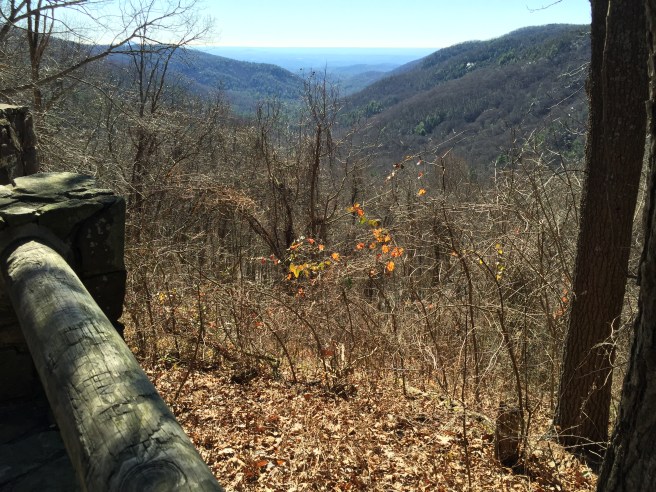Near a place called Blood Mountain in the Chattahoochee National Forest in north Georgia, the Appalachian Trail makes a steep descent south towards a place called Neels Gap. The Trail crosses Highway 19/129 just a few miles south of Vogel State Park at a historic site called Walasi-Yi Interpretive Center. The stone façade of the Center has been standing at Neels Gap since 1937. Originally a log structure, the building took its present form when it was rebuilt by the Civilian Conservation Corps (CCC) and was a living quarters for corpsman working to reforest the Chattahoochee National Forest. It later served as a restaurant and inn until 1965, when it was abandoned. By the mid-1970s the building was slated for demolition, but a group of conservation-minded locals lobbied successfully for its inclusion on the National Register of Historic Places in 1977. Spared from destruction, the building served as an irregular store to hikers and tourists until 1983 when Jeff and Dorothy Hansen took over management of what became known as Mountain Crossings at Walasi-Yi. Although the store has changed hands several times, it still operates as a premiere full service outfitter on the Trail for thru hikers offering gear, large resupply options, lodging, and an array of gifts.

Walasi-Yi Interpretive Center boasts a couple of interesting features. It is the only place where the Appalachian Trail passes through a man-made structure. It is also the home of what I call the tree of blown-out hiking shoes. For years, hikers have been slinging their badly-worn shoes up into the branches of a tree located just outside the store’s entrance. It caught me by surprise the first time I looked up and noticed what was hanging from the limbs. I’m sure the tree stands as a monument to those who have passed through this section of the Appalachian Trail, whether they started in Georgia, Maine, or a thousand points in between. Having one’s shoes included in the tree must surely be a badge of honor. It almost serves as a footwear mausoleum, and perhaps a warning to those who think hiking the Trail is not so difficult.



